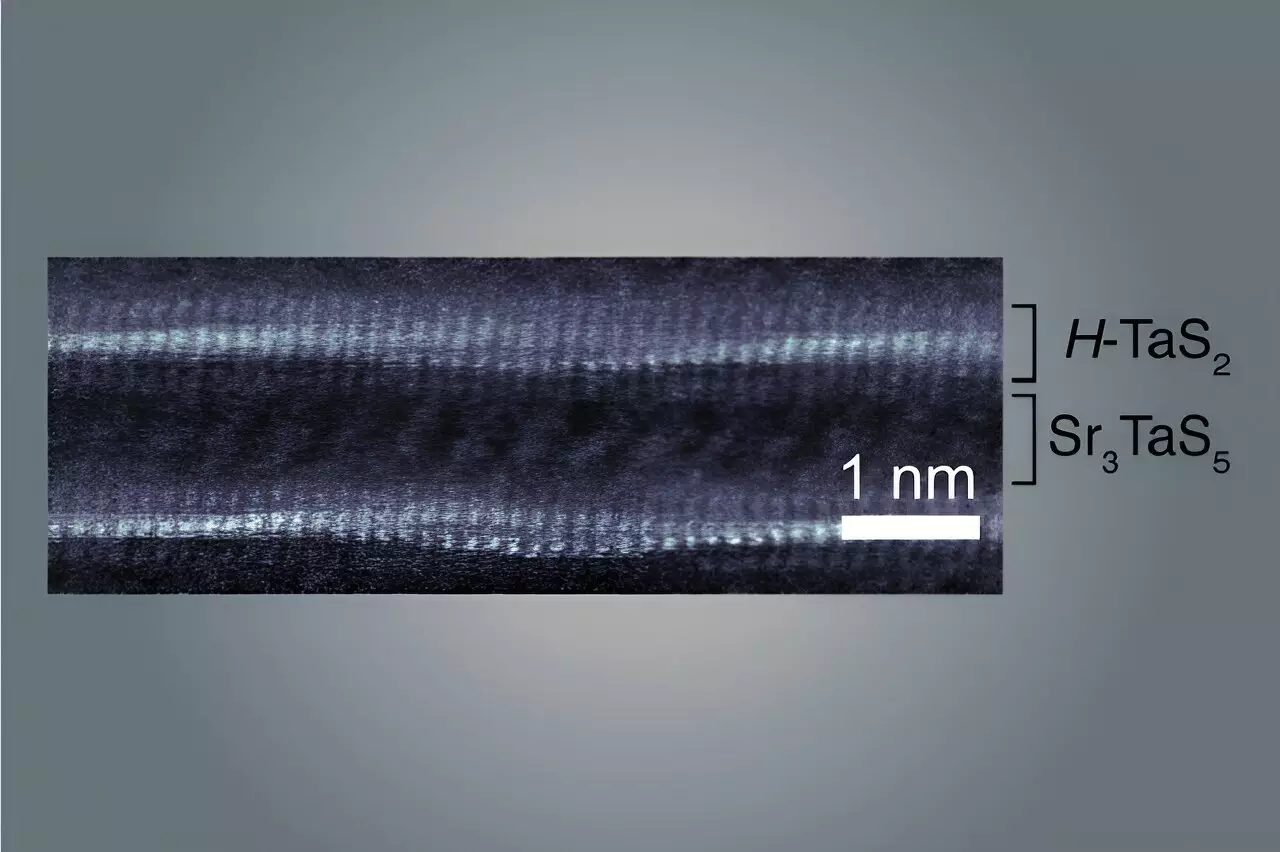In the fast-evolving field of materials science, researchers are continuously on the lookout for innovative materials that could unlock the next generation of advanced technologies. Recent work from physicists at MIT highlights a groundbreaking development: a new material characterized by wavy atomic layers that exhibit both superconducting and metallic properties. This innovative endeavor not only demonstrates the potential for manipulating quantum behaviors but also establishes a systematic approach to material design that could pave the way for further discoveries.
The new material, constructed from atomically thin layers that undulate at the nanoscale, enables researchers to explore complex physical phenomena more effectively. The ability to manipulate a macroscopic sample by hand is crucial. Traditional methods often confined scientists to observing and manipulating minuscule samples from a distance, a limitation that can obscure the intricate interactions at play. The significant size of this newly synthesized material allows for more extensive observations and experiments.
The innovation in this material stems not from sheer luck but from a methodical synthesis process. By carefully mixing specific powders and subjecting them to high temperatures in a furnace, researchers harness chemical reactions that lead to the natural formation of bulk crystals. This rational design methodology represents a paradigm shift in how materials can be conceived and created. Scholars such as Aravind Devarakonda emphasize the key breakthrough: the ability to dictate the properties of macroscopic materials based on atomic-level interactions. This understanding could allow physicists to manipulate material properties more systematically, providing a foundation for future research and technological application.
The structural characteristics of these wavy layers are critical to their unique properties. The team identifies that the atomic wave formations arise from mismatches in the crystal lattice size of different layers. This congestion results in a mechanical deformation, similar to how overlapping paper sheets create bumps and folds. Such analogies help demystify the rather abstract concept of atomic layers while illustrating the significance of the structural features in material behavior.
One of the most enticing aspects of this new material is its superconducting capabilities. Superconductivity allows electrons to traverse a material without resistance — a phenomenon that has vast implications for energy efficiency and electronic applications. The researchers reveal that the unique wave formations in the material create distinct electron pathways, enhancing the flow of electrons in particular directions. As Devarakonda explains, the wavy structure imprints on the electrons, resulting in a variability of superconductive strength across the material.
This nuanced behavior is particularly compelling. The layered interactions offer a promising avenue for developing superconductors that operate under more varied conditions, making them viable for real-world applications. The careful design of the atomic structure results in a substantial impact on electron dynamics, indicating that even minor alterations in structural design could yield significant changes in material performance.
The implications of this work extend far beyond academia. The research team believes that these wavy materials could be leveraged for various technological innovations, especially in electronics and energy systems. The scope of applications can range from developing better electrical conduits to creating devices that take advantage of unique magnetic properties. The ongoing exploration of this new family of materials invites researchers from various disciplines to engage with these promising findings.
Moreover, this introduction of wavy structures opens up uncharted territories within materials science. Just as previous discoveries in material chemistry led to technologically transformative innovations, the authors assert that the exploration of their new findings could lead to even more unexpected breakthroughs. Future research can unravel hidden properties that may be leveraged for advancements in fields such as quantum computing and advanced nanotechnology.
The work accomplished by the MIT physicists presents a remarkable leap toward understanding and manipulating materials with extraordinary properties. Their systematic approach to fabricating wavy materials indicates not only the potential for novel superconductors but also a strategy that could inspire new avenues of inquiry in materials science. With researchers well-equipped to explore these dynamics further, the world stands at the threshold of exciting developments that could reshape our technological landscape in the years to come. The journey has just begun, and this is only the start of a much wider narrative in the study of quantum materials.


Leave a Reply